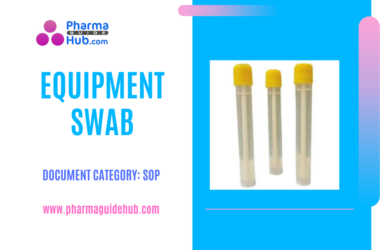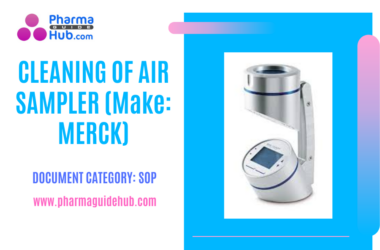
OBJECTIVE:
The objective of this document is to define the mandatory requirements applying to the control of microbiological cultures by means of which Microbiology laboratories of {Company Name} will ensure compliance with national and international GMP and inspectional requirements for microbiological quality control activities.
SCOPE:
This SOP is Applicable for control of microbiological Cultures including standard reference ATCC cultures or equivalent, in-house isolates used in Microbiological Control Laboratories supporting manufacture of sterile and non-sterile drug substances and drug products. Control of Microbiological cultures as described in the SOP includes the procurement, storage and maintenance of Microbial cultures. Control of Microbiological cultures as described in the SOP also includes the usage of Microbial cultures as standards in different microbiological tests at {Company Name} {Location}.
RESPONSIBILITY:
Microbiologist/QC Head: Follow the instructions as per procedure and review and technical correction of SOP.
ACCOUNTABILITY:
QA Head shall be Accountable for implementation of SOP.
PROCEDURE:
Culture: The growth of organisms such as bacteria and fungi in a nutrient medium, usually under controlled condition.
DEFINITIONS: The definitions listed here apply in the context of this SOP and may or may not be applicable in all other usage
Lyophilization: A process used for preserving biological material, by removing the water from the sample, which involves first freezing the sample and then drying it, under a vacuum, at very low temperatures.
Culture Revival: A method of transferring lyophilized or freeze dried culture to suitable nutritional medium at specific temperature for activation. 3.4 Passage – One passage is defined as the transfer of organisms from an established culture to a fresh medium. Each cycle of freezing, thawing and revival in fresh medium is considered a transfer.
Principle
Microbial cultures are the most delicate reference standards to handle. Their viability and characteristics are dependent on adequate handling and storage.
Standardization of procedure for storage and usage of culture by user laboratory should be done in order to minimize the opportunity for contamination or alteration of growth characteristics. The careful and consistent treatment of stock cultures is critically important to the consistency of microbial test results.
Microorganisms are generally used as standards in Microbiological tests such as antibiotic assays, antimicrobial effectiveness tests, growth promotion studies of media, in method suitability studies and other validation or challenge studies.
Procurement of Reference Microbiological Cultures:
Reference microbiological cultures for the array of pharmacopoeia microorganisms shall be obtained from a national or internationally recognized culture collection such as ATCC or from commercial manufacturers.
Reference cultures procured from commercial manufacturers shall have a certification to prove the traceability to the International or National collection centers.
Reference cultures for the array of pharmacopoeia microorganisms can be acquired in frozen, freeze dried (lyophilized), on slants or in ready to use form.
Reference cultures procured shall have a Certificate of analysis with details of the culture identity, ATCC number, lot number, passage number, storage conditions, handling instructions and expiry.
Click the link for download word file copy of this document: https://pharmaguidehub.com/product/control-of-microbiological-cultures/
Culture Storage & Maintenance:
All Reference cultures shall be stored according to the manufacturer’s instructions and labeled with date of receipt and signature.
All Reference cultures obtained shall be verified for their microbial purity and identity before use, ideally at the level of genus and species.
Primary (stock) cultures shall be prepared from the reference cultures and subsequently working cultures shall be prepared from the primary cultures.
Primary cultures shall be maintained in a cryoprotective medium.
Working cultures shall be maintained preferably in broth, solid agar or cryoprotective medium.
Whenever the working cultures needs to be used and stored for a long period, seed lot technique shall be the preferred method.
Laboratories shall have written procedures for the maintenance and storage of stock cultures based on the compendia requirements/manufacturer’s instruction.
The laboratory should have dedicated area, maintained with required Bio-safety level for culture handling activity.
The procedure should have clear instructions for the physical segregation and maintenance of the cultures with proper identification.
The cryo-vials of primary or seed lots of culture shall be used to generate monthly or weekly working cultures.
Once open, the cryo-vials should not be re-freezed and unused portions should be discarded to minimize the risk of loss of viability and contamination of stock.
Primary and working culture storage conditions shall be validated to ensure the microorganism viability and performance.
Working Cultures that are used for antibiotic assays should be transferred on to the fresh media on a weekly basis.
A system shall be in place to ensure that the stock (primary/working) cultures prepared in the laboratory can be traceable to its source.
Passages from one original culture shall not exceed more than five transfers.
The number of transfers of working control cultures should be tracked to prevent excessive sub culturing.
The laboratory shall have a system in place to monitor the quality of microbial cultures after transfer, in addition to initial verifications.
The laboratory procedure for culture handling should have the clear instructions and precautions to be taken during the course of handling and storage.
A procedure for handling accidental spillage of culture and discrepancy in Microbial culture should be in place in Microbiology laboratory.
The procedure for culture maintenance shall have clear instructions with regard to the labeling for primary and working cultures. The labeling shall include (but not limited to):
- Name of Microorganism
- ATCC Number
- Date of rehydration/preparation
- Storage condition
- Transfer/passage number
- Use before
- Initials of the microbiologist
Record for handling and usage Stock (primary/working) culture shall be maintained.
Destruction of Cultures
The cultures shall be decontaminated and destructed as per standard laboratory procedure.
Culture destruction details shall be documented and record of the same shall be maintained.
Click the link for download word file copy of this document: https://pharmaguidehub.com/product/control-of-microbiological-cultures/
REFERENCES:
Not Applicable
- ANNEXURES:
Not Applicable
ENCLOSURES: SOP Training Record.
DISTRIBUTION:
- Controlled Copy No. 01 : Head Quality Assurance
- Controlled Copy No. 02 : Head QC (Micro)
- Master Copy : Quality Assurance Department
ABBREVIATIONS:
| PNC | : | Process Non conformance |
| No. | : | Number |
| SOP | : | Standard Operating Procedure |
| EM | : | Environment Monitoring |
REVISION HISTORY:
CHANGE HISTORY LOG
| Revision No. | Details of Changes | Reason for Change | Effective Date |
| 00 | New SOP | Not Applicable | To Be Written Manual |
Click the link for download word file copy of this document: https://pharmaguidehub.com/product/control-of-microbiological-cultures/


